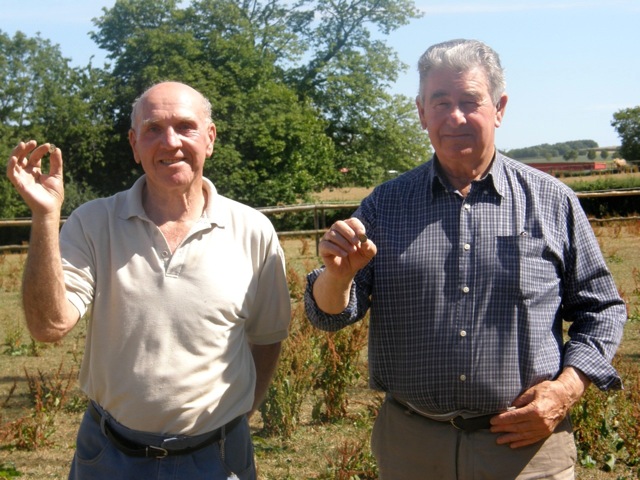Local Metal Detectors Dennis and Jim describe the moment they discovered the site…
“Dennis and I have been detecting since 1995 and we both prefer to go together, but on this occasion during late October 2007, I was on my own and at a loss for somewhere to go. Normally stubble fields are the best to search after harvest time, but as conditions for ploughing were good in 2007, most farmers had ploughed their arable fields very early and sites were very scarce. As a result, I went on a survey of the farms in this area and whilst driving along this site road, I thought I would pop in and see the landowner as he has odd fields scattered around the area and he is a really friendly gentleman. During our conversation, he told me that he had no fields in stubble but I could search the field adjacent to the premises that we were currently in. The field was in grass at the time but had been ploughed many times previously. So off I went!
When entering a new field, it pays to search around the perimeter at first as this usually produces the most finds. On the first day I started to the right hand side of the gate on entry, and I had nearly completed a full circuit of the field when I had a positive signal and discovered the first Roman coin. Strangely enough, this coin is to date still the oldest Roman coin found on the whole site and I understand it dates to between 117 BC and 116BC. The coin is currently retained with the landowner.
By the end of this first day, I found a total of five Roman coins and other unrelated artefacts. The next day I discovered a further nine Roman coins and a few more non-Roman artefacts. During the following days, Dennis was available and we both searched the rest of the field together and further coin finds were made.
After completing the search of this field, I obtained permission from two adjacent landowners for Dennis and I to search their fields which we have been doing on and off for over four years. During this time I recorded all the coin find spots on a plan overlaid with an Ordnance Survey grid and passed the details to Danielle Wootton, the Finds Liason Officer for Devon.
During 2009, it became apparent that there was a high incidence of first and second century AD coins amongst our finds, and we were told this could be indicative of a settlement site.
Following a visit by Sam Moorhead (British Museum), Danielle managed to obtain funding for a geophysical survey, and the results of which warranted further investigation leading to the present archaeological project at the site.
It has given Dennis and I great satisfaction to feel that we may have made a useful contribution to both local, and, according to Sam, national history!
I would like to emphasise that none of this would have happened without the kindness and generosity of the three landowners who gave us permission to search their fields.”
Philip Wills (Jim)
7th August 2012

On behalf of the students at the University of Exeter, we would like to offer a great vote of thanks to Jim and Dennis for their incredible discovery. Not only has it changed our ways of thinking about the Romans in SouthWest Britain, but it has also created a hive of archaeological activities in which students can physically interact with the landscape and its history. The Ipplepen Archaeological Project 2012 has already created permanent memories of fun, interest and passion for the university’s students. To Jim and Dennis, you are our local heroes! Thank you!
Charlotte Young, University of Exeter Classics and Ancient History PhD Student.